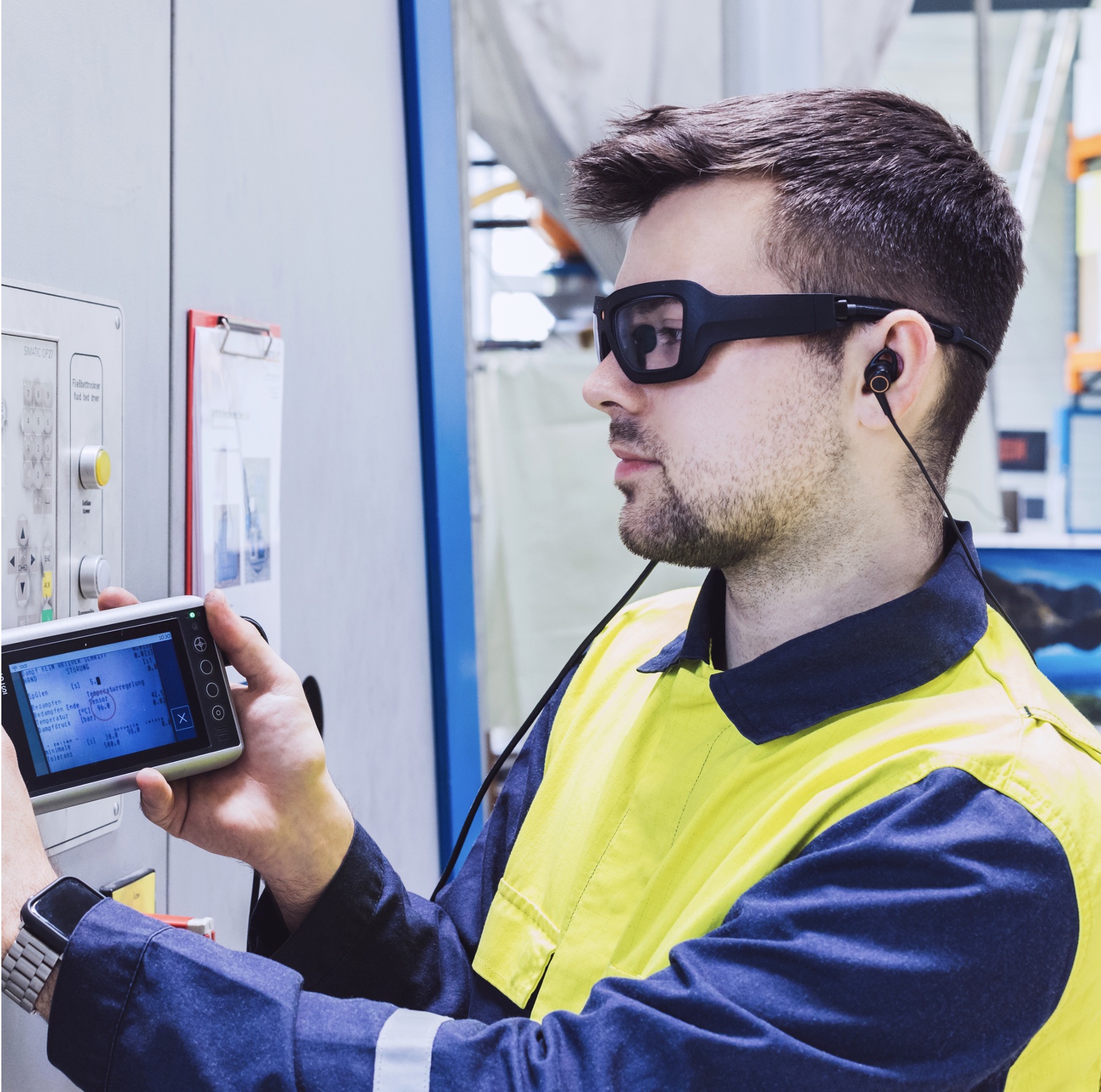
By Viewpointsystem Editorial Team
Automation and digitalization are reshaping roles and professions in manufacturing. Entire workforces must adapt and learn new skills, such as operating or programming machines and robots, after previously performing manual tasks. There is also a growing need to make work processes more efficient and safer. This is where eye tracking comes in. Companies like Toyota and Denso have already successfully integrated this technology on the shop floor for various applications.
Eye tracking reaches its full potential when integrated into lightweight yet robust smart glasses. These glasses capture and visualize where the wearer is looking and what they are focusing on during a task. This provides a firsthand perspective on tasks and workflows, offering a wide array of applications on the shop floor.
Remote Support: Efficient Help at a Distance
Cost-cutting measures and the ongoing shortage of skilled workers often mean that the necessary expertise is not available on the shop floor. Smart glasses with eye tracking, however, enable on-site employees to receive support from knowledgeable colleagues at remote locations. The glasses transmit the wearer’s field of view in real-time, with eye tracking showing exactly where the wearer is looking. This gives remote experts an immediate understanding of the situation from the wearer’s perspective, which is especially helpful when troubleshooting machine problems or repairs. Experts can see exactly what the on-site worker is focusing on, enabling clear instructions for faster solutions and reduced downtime.
The benefits of remote support and maintenance are evident: the investment in this technology pays off through savings in travel costs and improved plant availability and machine utilization. Moreover, by reducing travel, companies also reduce their carbon footprint.
Training and Skills Development
As production processes become more automated, manufacturing tasks and workflows are evolving. Eye tracking provides valuable insights for training and retraining workers. By observing where an instructor or experienced colleague directs their attention, workers learn how to perform new tasks correctly.
Trainers or experienced colleagues can create effective and visually engaging training videos for their peers. Streaming the process enables lively live training sessions for employees at other locations, allowing them to experience an expert’s perspective on the task even from a distance.
The demand for tailored, visual employee training will significantly increase in the future. Given the challenges of talent shortages and an aging workforce, new methods of knowledge transfer are essential, especially when highly experienced colleagues retire, potentially leaving competency gaps.
REAL-LIFE EXAMPLE: HOW ÖBB (AUSTRIAN FEDERAL RAILWAYS) USE EYE TRACKING FOR EMPLOYEE TRAINING AND SAFETY IMPROVEMENT – LEAR MORE.
Quality Assurance and Documentation
Eye tracking enables real-time visual inspection of products and machinery. Quality inspections, audits, or maintenance processes are accurately documented because, unlike traditional video recording, eye tracking reveals the specific areas of a product or machine that the inspector has examined.
Process Optimization: Efficient Workflows
Analyzing the visual attention of employees provides valuable insight into production workflows. Eye tracking analysis helps identify obstacles, disruptions or inefficiencies in a work process. These insights are the basis for targeted process optimizations that improve production performance and quality.
Ergonomics and Safety
By performing gaze analysis, potential hazards can be identified and mitigated. For example, it can determine whether a forklift operator is paying attention to his surroundings or is focused on the forklift’s control display. It also shows if the field of vision is obstructed by obstacles. This allows critical situations and safety risks to be identified before accidents occur.





